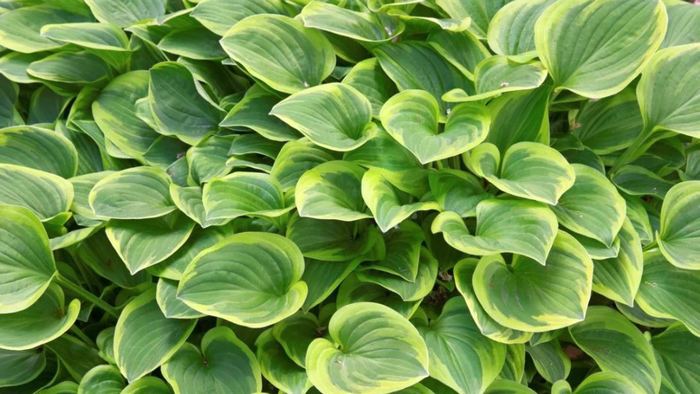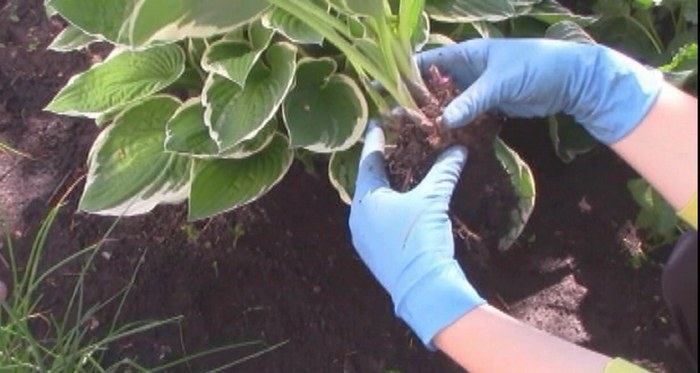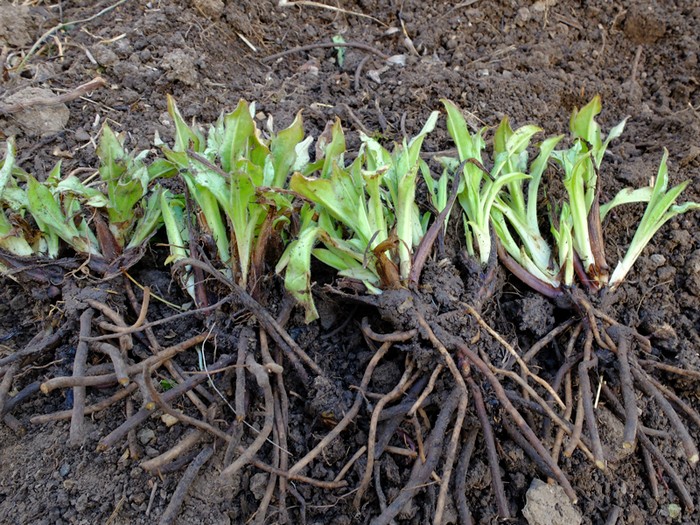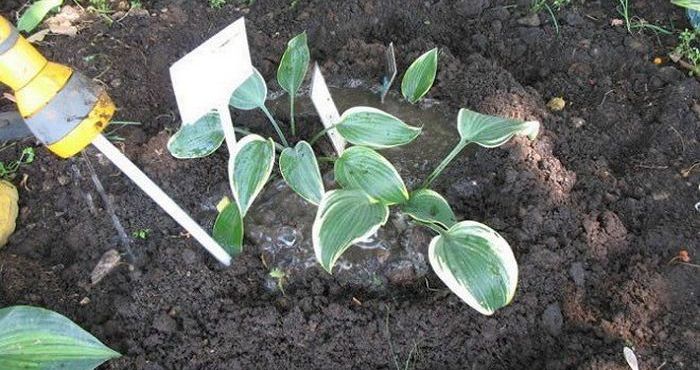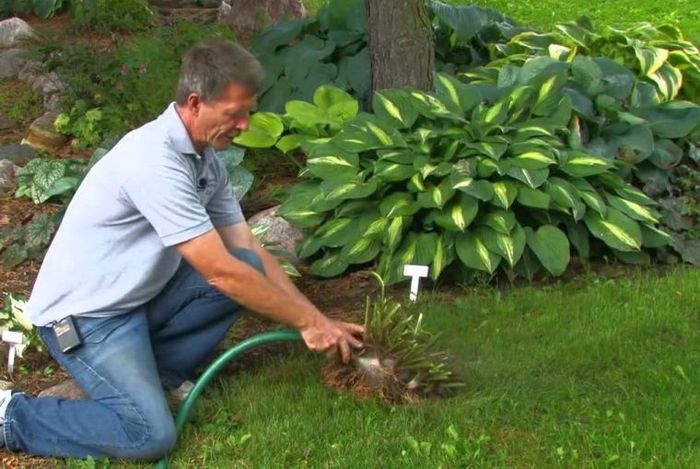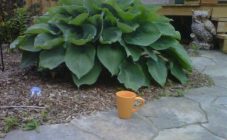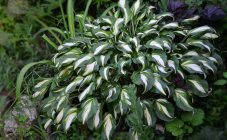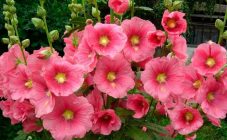Content:
The beauty of the host is a decoration of gardens and summer cottages. Landscape designers include this frost-resistant and easy-care ornamental plant in the design of rocky slopes, flower beds and ponds. The host looks great at the entrance to the house. It amazes with a variety of shapes and colors of leaves, which are somewhat similar to plantain leaves.
The homeland of the hosts is Japan. In Europe, it appeared in the 18th century, and, thanks to breeding work, received a large number of various varieties and forms. No wonder she is called "the queen of landscape design".
Where to plant the host in the country
Where to put the hosta to please the eye and be a decoration of a suburban home? It will look original both on a flower bed, consisting of its various varieties, with various color of leaves, their shape and height of the plant itself, and planted along the paths located in the country, replacing the curb. It is suitable for growing in rocky gardens - rockeries, being the backdrop for flowering crops planted among stones.
Hosta is an unpretentious plant, but she does not like the scorching sun. Therefore, you need to plant the host in the country as far as possible from direct sunlight. Places where there is partial shade and no stagnant water are perfect for her. Therefore, when planting hosts in the ground, it is necessary to provide drainage at the bottom of the hole, consisting of broken brick or crushed stone, only then plant the plant.
The host will look no less original in the overall design of a suburban house, placed in roomy, but low pots. Compact, low varieties of hosts look good in them. Why is it convenient to plant hosts in pots? They can be rearranged, if necessary, thereby changing the type of landscape design.
Hosta planting and breeding rules
There are different methods of breeding hosts: dividing the bush - by rhizome, seeds and cuttings. Usually, seedlings or separated parts of a large rhizome are planted in open ground.
Before planting, the question arises, in what soil does the host like to grow? Those summer residents, in whom it has been growing for more than one year, are recommended to be planted in humus-rich, slightly acidified or neutral soil. Hostas are planted in prepared holes. It is recommended to make a distance of 50-60 cm between them if a medium-sized bush will grow. If these are gigantic hosta varieties, the distance between the holes should be 1 meter from each other.
Usually the best time to plant is in spring (April-May). At this time there is no threat of frost, and you can plant the hosta, but the soil for planting the hosts is prepared in the fall. The places where it is planned to land are fertilized with organic matter and dug up. Hosta can be planted both in late summer and early fall, but no later than mid-September. With later plantings, the host may not have time to root until the first frost. The soil is watered abundantly before the autumn planting.
Growing from a split rhizome
Gardeners consider it a rather effective way to grow hosts on their backyard by dividing a large bush. It is not recommended to divide young bushes, since not all hosta varieties tolerate this procedure painlessly at an early age. It is recommended to divide the bush with hosts over 4-6 years old. Reproduction by this method can be carried out both in spring and autumn.To do this, the hosts bush is very carefully dug out so that the root system is not damaged. The root system must be rinsed with water so that you can see how to divide the rhizome. Each part, separated from the bush, should have at least 2-3 growth buds. Then the hosts are planted in the open ground and the planted plant is looked after.
Growing from cuttings
The breeding period for hosts by cuttings is quite long: from late May to late July. The stalk is a young shoot with a "heel" taken from the growing hosta. The stalk is planted in the soil. The leaves are cut off by a third to avoid evaporation, and the cutting is watered abundantly. The leaves wither, that is, there comes a period when the plant should get sick. At this time, it needs to be sprayed and watered. Normal turgor is restored about 3-4 days.
Seed planting
There is a possibility of reproduction by seeds. But for seed breeding, proper preparation is needed. It should be said right away that, according to the observations of breeders, seeds with a dark color are considered fertile, they recommend taking the varieties Shamon and Aleganfog for planting seeds.
Taking into account the advice of specialists on preparing seeds for planting, you need to prepare a container in which the seeds will be sown. It must be treated with a solution of potassium permanganate to prevent infection by fungi or microorganisms of young hosta shoots. A drainage is placed at the bottom, and a substrate purchased at a flower shop is poured on top. It should contain: perlite, vermiculite and peat. The substrate is moistened. Seeds are sown from above and sprinkled with a substrate. The soil is compacted. The container is covered with glass or plastic wrap to retain moisture.
Seedlings will appear in two to three weeks. During germination and when shoots appear, the soil is moderately moistened. The container with seedlings should not be kept in direct sunlight. It is better for them to be in a light shade, but in a well-lit place. When 3 leaves appear, it is necessary to dive, that is, to plant young seedlings in pots. Gradually, the seedlings are accustomed to the air temperature outside the room.
It is impossible to say unequivocally which of the breeding types is better. Each has its own pros and cons. Summer residents usually choose the one that suits them. The main thing is not how to plant the host, but caring for it after planting and creating the necessary conditions for its growth. The signs of the variety can be seen in the third year of life, the hosta begins to bloom, depending on the variety, at 4-5 years.
Hosta boarding and leaving at different times of the year
With the arrival of spring, in the first half of May, many perennial plants wake up in personal plots, including hosta. What should be done at this time? Begin to open the bushes sprinkled with mulch. Do the first weeding and loosening of the soil. Adult plants can be painlessly divided, and those that are disturbed by the transplant must be fed with any fertilizers for decorative deciduous crops.
In the summer, especially in hot summer, morning and evening watering is required. You can make organic fertilizing.The first young flower stalks must be removed from the bush so that it does not become loose. If it is necessary to transplant an adult bush in the summer, it is transplanted with a lump of earth in cool weather and after such a transfer, it is watered abundantly.
In the fall, you can plant hosts by dividing the bush. Many growers do not remove the leaves from the bush when the leaves dry up. They play the role of mulch and a landmark where hosta sprouts will appear in spring.
Landing and care in the Urals and Siberia
If the hosta, growing in the southern regions of Russia, is unpretentious, then this cannot be said about its Siberian relatives. In the south and in the middle lane, there is no need to cover the plant for the winter, because there is no severe frost. It is necessary to take care of the hosta growing in the northern regions not only in the spring-autumn period. She needs care in winter too.
The plant must be prepared for wintering. In the fall, all flowers and buds are removed so that nutrients are not consumed. The root circle is dug up and mulched. Mulch, consisting of sawdust, brushwood, peat, is pretreated with chemical insecticides to neutralize germs and eliminate pests. The plant is covered with material intended for winter shelter. The perimeter of the shelter should be pinned to the ground with slats and stones to prevent rodents from damaging the plant. When the snow falls, they also cover the shelter.
The best materials for shelter are agrofiber, burlap, or spunbond. You can cover the hosta with a large layer of mulch (15-20 cm), and cover it with pine paws on top and make a nice hill of snow above the shelter. This is how many summer residents of the North and Urals shelter their hosts, believing that this is the best option to keep the plant warm during severe frosts.
